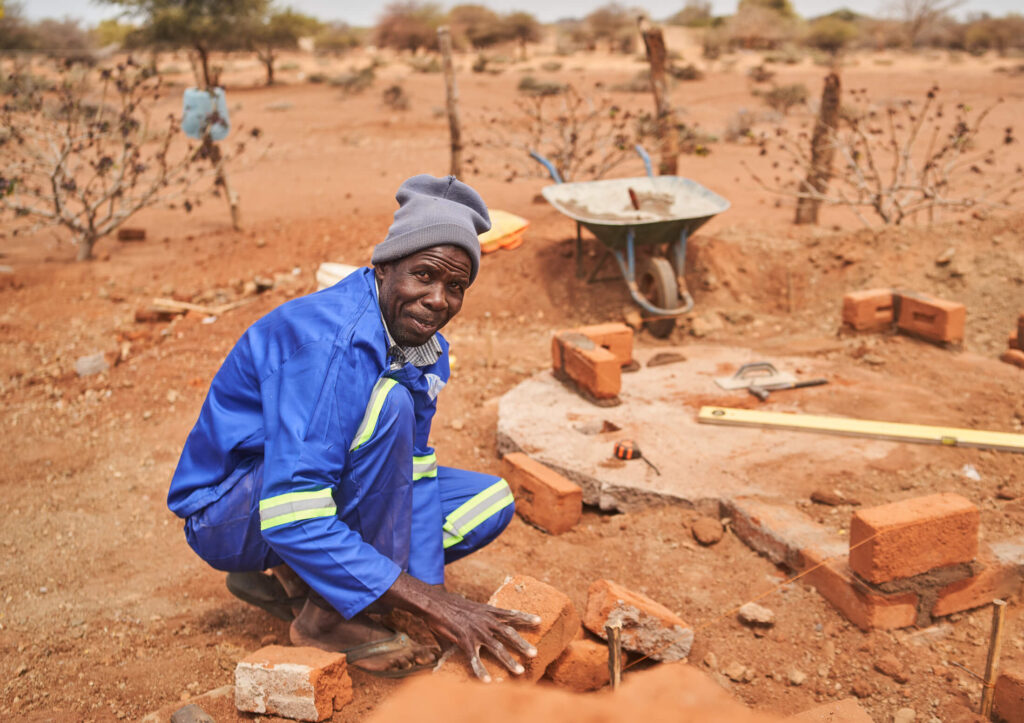In many parts of the world, daily access to a functioning toilet is about more than just basic hygiene. The humble toilet becomes not only, as the United Nations says, a “place for peace,” but a vital tool in improving community water, sanitation and hygiene (WASH) practices. Things like a private, working toilet promote proper waste management, decrease the spread of infectious disease and protect personal safety and dignity. Our team in Zimbabwe is advancing the United Nation’s goal of “safe toilets for all by 2030” one brick at a time.
In rural Zimbabwe, many communities—especially those struggling with natural disaster or conflict—lack access to basic sanitation services, with some people having to walk long distances to access a toilet or a safe place to relieve themselves in privacy. In communities with few or no local builders trained to repair broken latrines or construct new toilet systems, and insufficient funds to purchase the necessary and costly building materials, many resort to open defecation, which can have negative impacts on health and safety, especially for women and girls. And extreme weather events, such as droughts or flooding, can damage existing sanitation facilities, exacerbating these health and hygiene challenges.

Before our team met Nduma, a visually impaired woman who lives in the rural Matabeleland South province of Zimbabwe, she was one of the 419 million people worldwide practising open defecation, as it was the only option after the latrine on her homestead fell into disrepair. Now, thanks to the work of a coordinated group of local builders and International Medical Corps WASH officers, Nduma has a new private pit latrine. Here’s how it all happened.
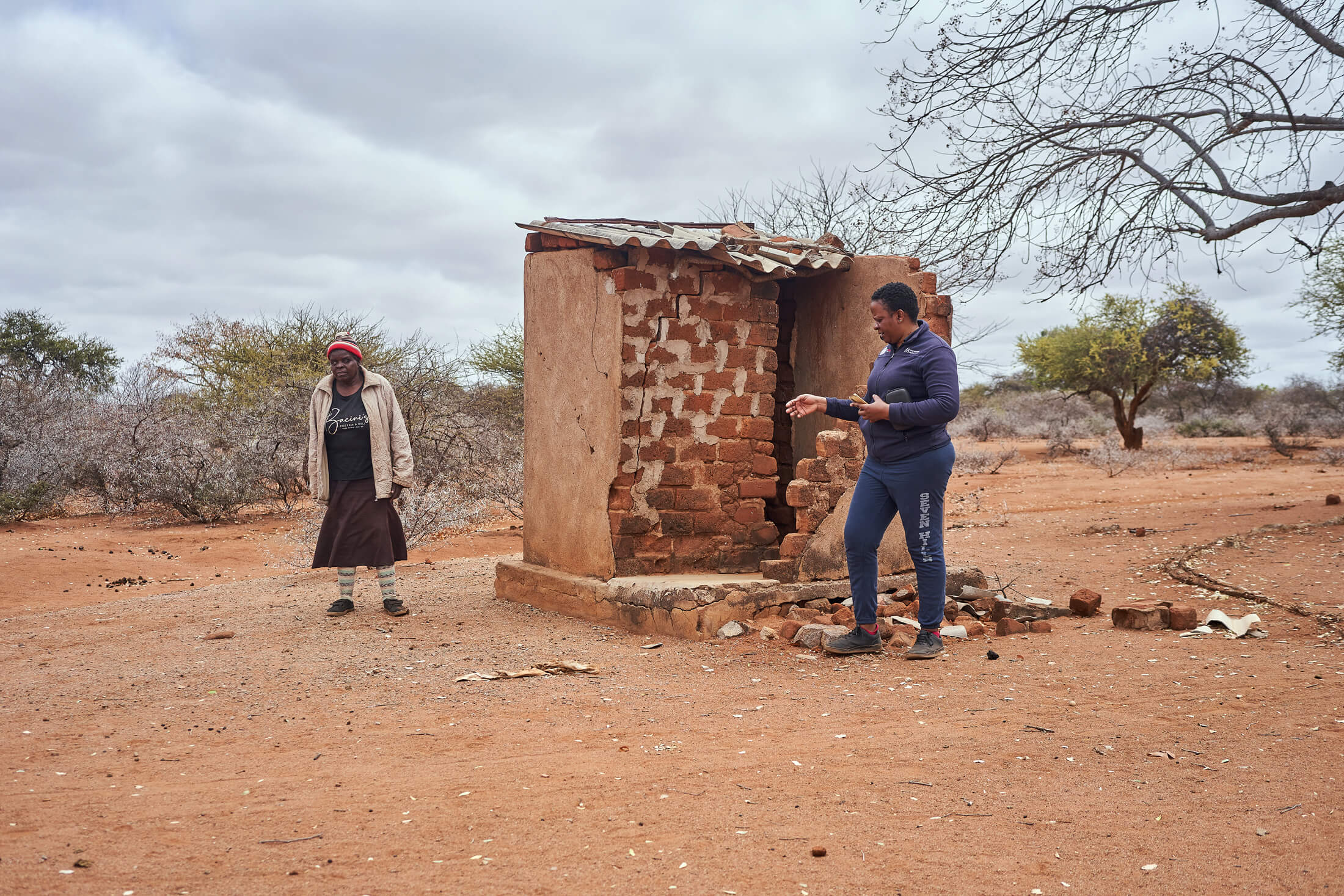
Nduma shows the old, broken-down latrine on her property to Prudence Ncube, International Medical Corps WASH Officer.


Rekhathetsi, the local builder, carefully examines the environment, accounting for the location of the home and the nearest groundwater supply, the type of soil present and the windward direction. After Rekhathetsi identifies a specific location for the new pit latrine, he stakes and marks off the area.



The team assembles construction materials, such as bricks, stones, cement, concrete, sand, nails, shovels, measuring sticks and water.



After any necessary soil excavation, Rekhathetsi measures an outer circle on the ground for the foundation and marks it with string and nails.
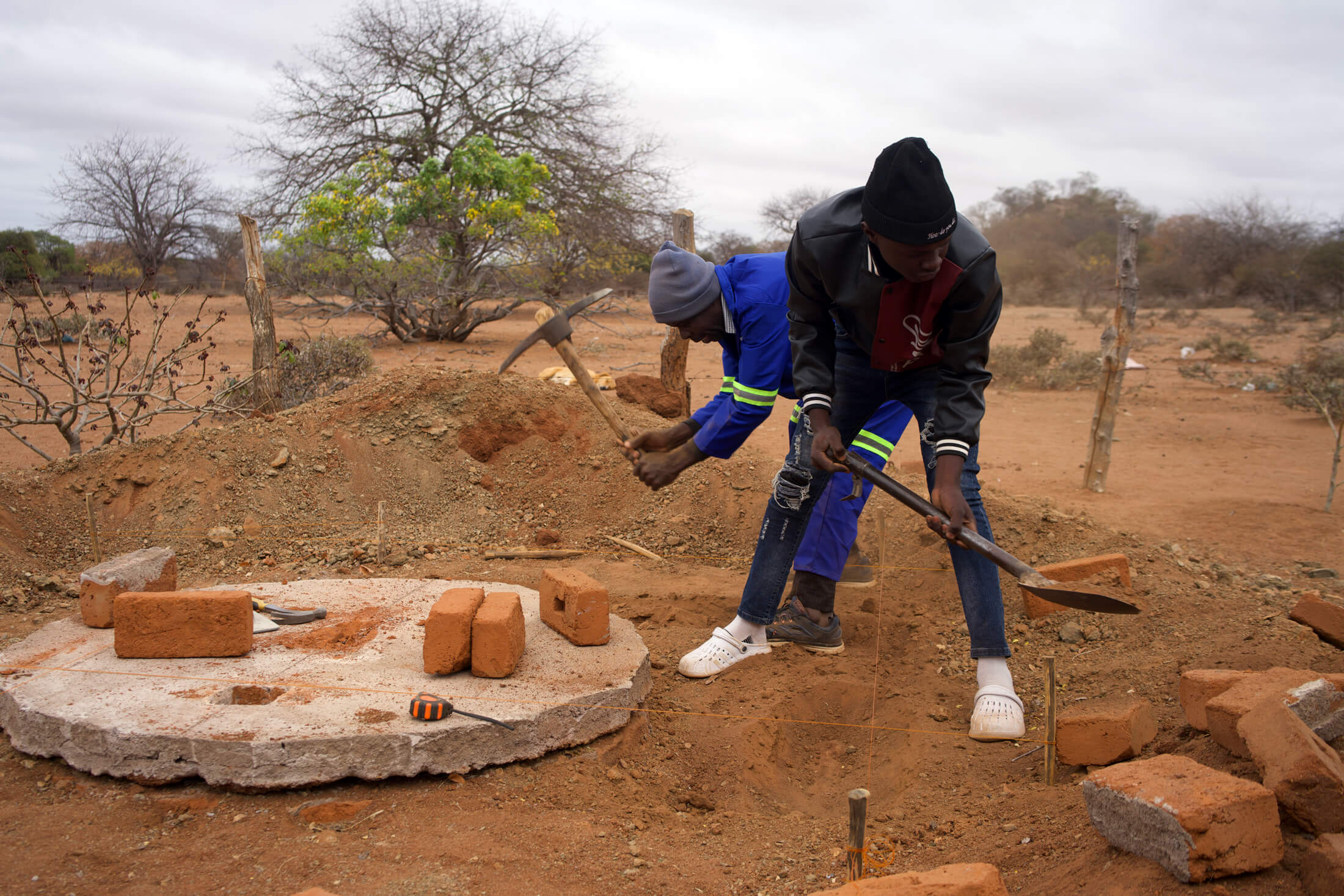
Using a pickax and shovel, workers dig a circular hole 1.25–1.5 meters deep for the latrine. Then the team ensures that the pit is circular and level, with a consistent diameter, by tamping and carefully scraping the sides of the hole.



While some team members excavate the hole for the latrine, local builders, friends and International Medical Corps WASH officers mix cement, carry water and move supplies using wheelbarrows and donkey carts.
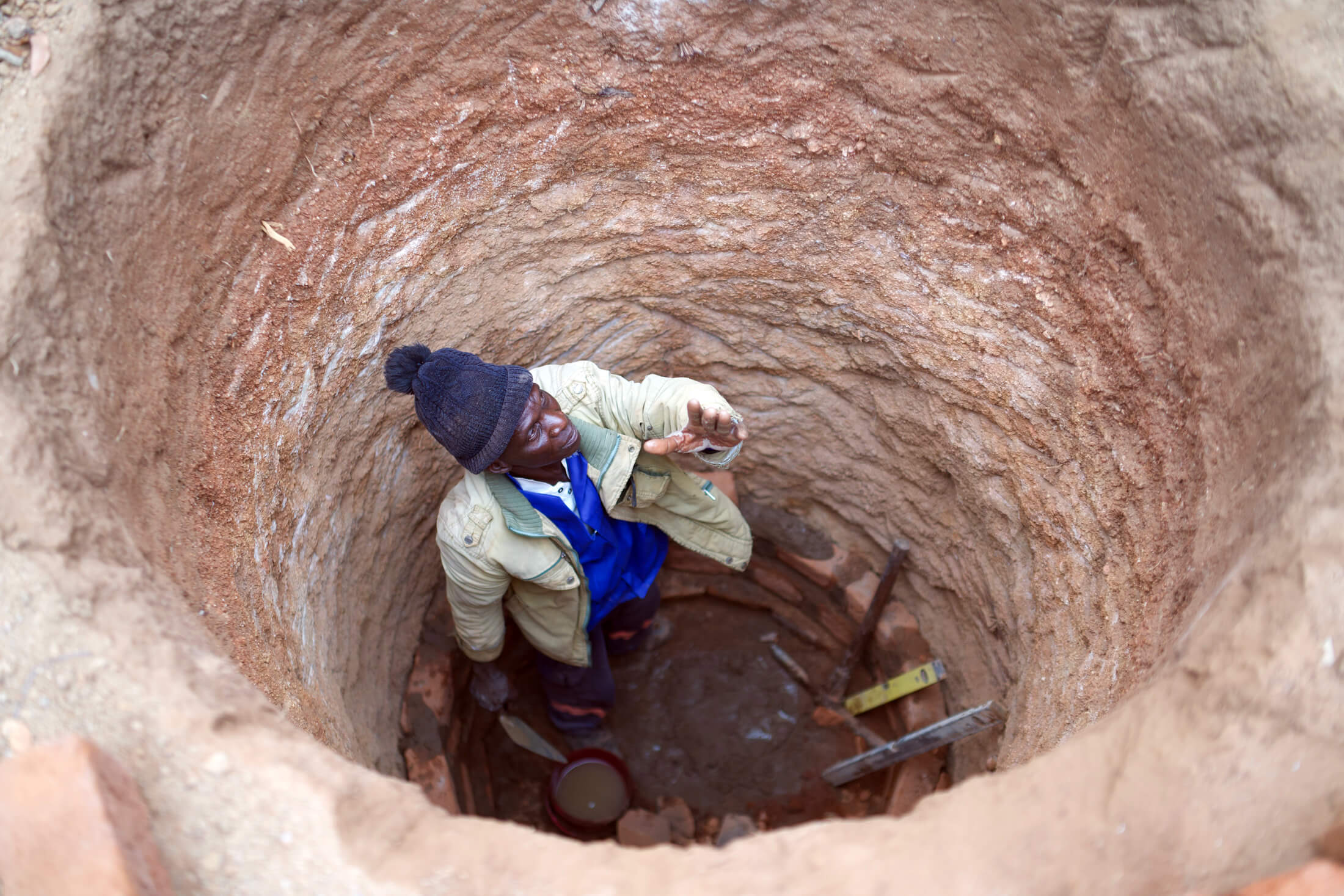
Within the main circular pit, workers dig a deeper inner pit, with a diameter of 80 centimetres, into firmer soil to the final depth of 2.5m. This depth ensures that, as waste falls, the solid residue accumulates and eventually decomposes at the bottom. Waste liquids then percolate into the soil and gases escape into the atmosphere through a vent pipe. Builders cast a concrete slab with a vent hole and a drop hole and it cures for seven days.
After this stage of construction, the masonry is ready to begin.


To prevent the sides of the latrine from collapsing, workers line the pit with brick rings and seal them in place one layer at a time with cement mortar until the rings extend to the top of the pit. The bricks and cement dry in place until they are completely compact and firm, at which point the construction team fits the cured concrete slab with a drop hole over the entire diameter of the pit. The hole typically has a covered lid as a safety and hygiene measure.


Once the team finishes constructing the pit latrine, they design and build a latrine shelter (or superstructure) with local materials, such as stone, bricks, wood planks or concrete. The superstructure surrounds the latrine completely, to help ensure privacy, and has an entrance side and air vents.
The builders then add any finishing touches, like plaster and corrugated metal roofing.
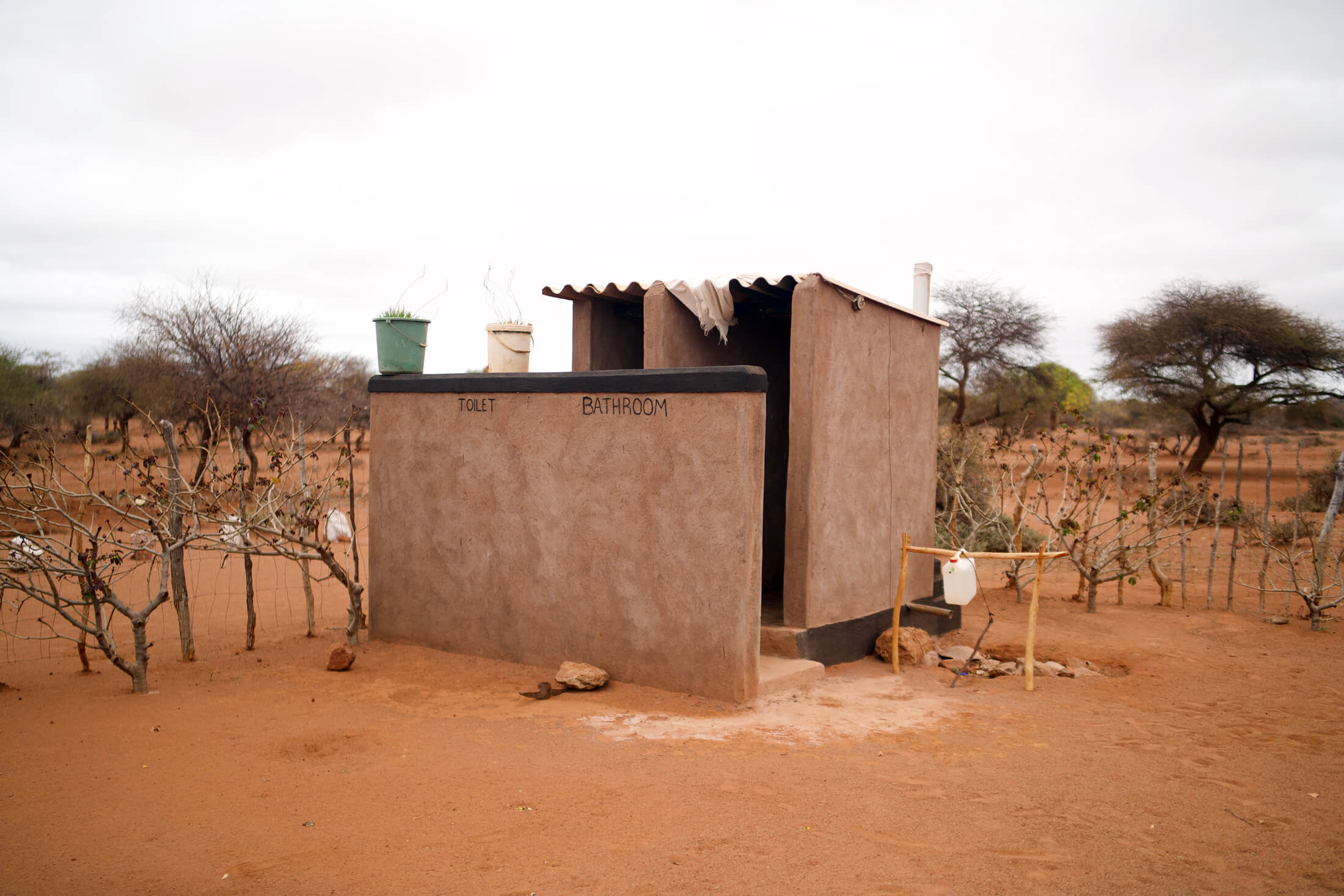
Nduma’s toilet, complete with bathroom and handwashing area, is ready for use!
This story celebrates the United Nations’ World Toilet Day, held annually on November 19, and depicts some of our work with the Zimbabwe Ministry of Health and Child Care. Around the world, more than 4 billion people live without a private, hygienic facility for household waste. Donate to International Medical Corps today to help us continue our work in communities facing WASH challenges and more.
